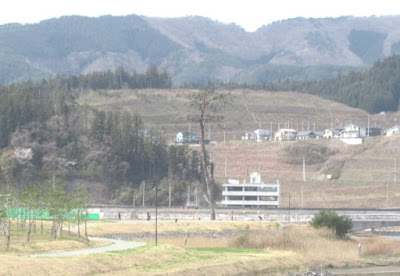More than 13 years have passed since the Great East Japan Earthquake in 2011.
People in Tohoku district have made great efforts to reconstruct their towns and villages after the disasters. Some plans have been realized while some have not.
I visited Rikuzentakata on the Sanriku coast in Iwate Prefecture for the first time since 2015. The city was severely hit by tsunami and more than 1800 prople (about 7% of total population) were killed or missed.
Various works, such as elevation of lands, construction of seawall, building of new houses in the higher places, were under way when I visited the city in 2015. (article on Nov. 1, 2015)
Some ruins and monuments are preserved. One example is a tsunami-washed building of Michi-no-eki shopping center. 14.5 meter-high tsunami attacked the building.
We
can see new houses (stand on higher land) behind Michi-no-eki building. (See the top photo)
There were about 70 thousand pine trees on the coast. All trees except one were washed away by tsunami in 2011. They started planting new pines after the disaster. Now, more than 40 thousand trees are on the shore.
The only survived tree was called the miracle pine tree. It died, unfortunately, a year after the disaster. A replica was built later.
“Tsunami memorial” facility was open in 2019. Various materials on tsunami and earthquake are displayed.(See also the 3rd photo)
Many temporary houses were built after the quake and tsunami disaster. Some are preserved and are now used for educational purpose.
I stayed in one of the houses. I also had a lecture on disasters.










No comments:
Post a Comment